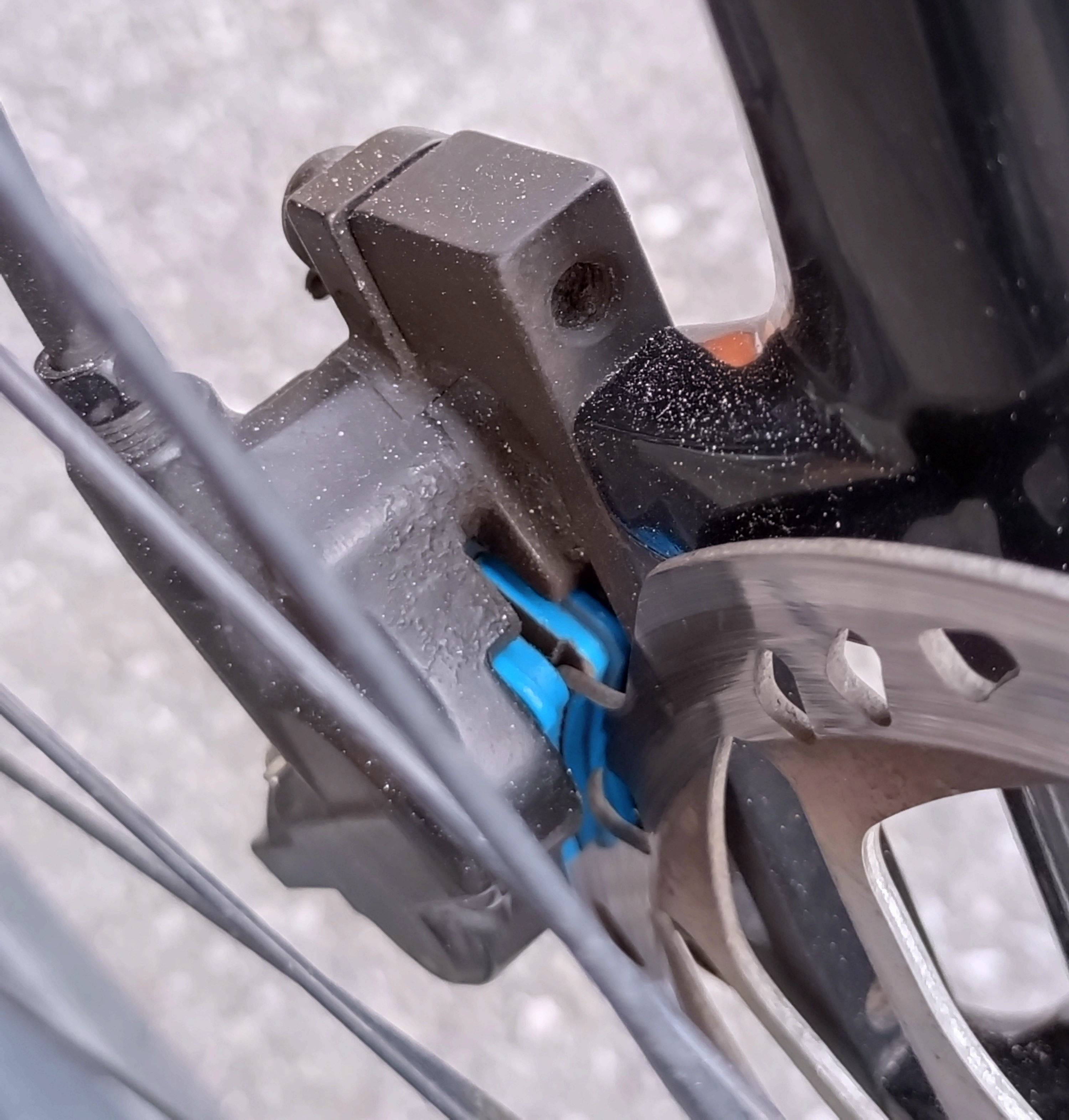The brake pads are too high and barely contacting the rotor, which is wrong. It's also dangerous and the bike shouldn't be used in this condition. If the wheel in the picture is properly in place in the dropouts, the problem is either that the wrong adapter was used, or an adapter was used where none should be. (The latter is not likely, because it appears that in this installation, not having an adapter would go past the "just right" point and instead the caliper would be too low. In other words it looks like it's missing roughly 10mm of rotor contact but taking off the adapter would drop it more than that. Note here that adapters basically make a radius correction in how far away the caliper is from the wheel center, but they're named in terms of the diameter correction they make in rotor sizes, so you have to bear that in mind at times in the following.)
The adapter in the picture is a post-to-post adapter of the type that offsets the mounting bolts for the caliper up instead of keeping them in line and simply using longer bolts. Thus it is likely a +40 or +43 adapter, which are typically all of the offset design, and +20 or +23 adapters are typically all of the inline type. You don't provide the fork model or rotor size, which would be helpful to know, but because it's typically only the +40/+43 designs that use the bolt offset, it's possible to get to near-certainty that it's the wrong adapter for the installation.
For reference, here is a picture of a common +40 adapter (TRP P40) and then a common +20 (TRP P20).


Most every MTB brake brand has adapters like this and they mostly do the same thing and look similar.
It's likely that what happened here is the original fork was a post mount 160 fork and the rotor is 200 or 203. So, if the rotor is a 200, it would have been set up with a +40 adapter, or a +43 if it was 203. Then it was switched to a post mount 180 fork by someone who is not a bike mechanic. "Post mount 180" means that 180 is the native rotor size that the fork would take with no adapter, so you would use only a +20 to go to 200mm, and so forth. The appropriate thing to do here that would have avoided this problem is take away the +40 or +43 and sell your friend the appropriate +20 or +23, plus longer bolts (usually included).
The other permutation we could be looking at is if the rotor is a 180, the new fork is PM160, the original fork was PM180, originally there was no adapter, and someone put that one on because they found they needed something to avoid physical interference, and it was all they had. Same basic problem.
It's important to understand that no aspect of the work done by the person who did this should be trusted for any length of time or under any circumstances. This error is almost impossible to let out the door by someone well-intentioned. All you have to do is look at it. Re-adjusting the brake is one of the fundamental parts of installing a new fork, and one can't just miss the problems here when doing so, even if one doesn't understand the nuances of brake adapter compatibility. You must absolutely second guess everything else about the installation, which includes whether the cut on the steerer was made correctly, whether the steerer/stem gap was set correctly, whether the stem hardware was handled and torqued properly, whether the stem height/position was recreated faithfully, whether the crown race made it on to the new fork properly and in good condition, headset adjustment, whether the wheel was installed correctly, caliper mounting bolts torqued, hose length appropriate, hose routed correctly, etc. Replacing a fork is a job with a lot of steps that are all pretty safety-critical. One mistake this bad is often accompanied by more. Getting eyes on the stem gap, the steerer cut, and the crown race is important and unfortunately may require a trip to a different shop.





